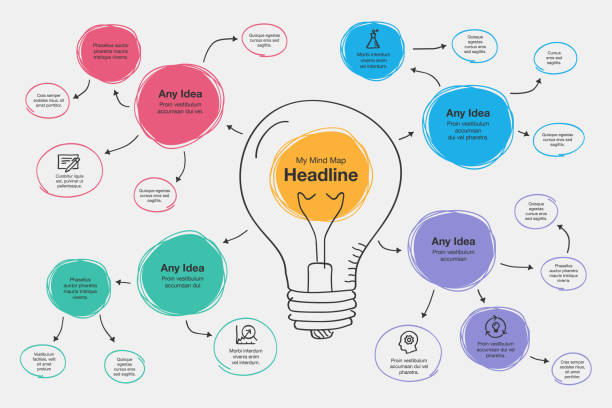What is mind mapping?
Mind mapping is a strategy of visualizing ideas and communicating them in an organized manner. Mind mapping visually represents a set of related or unrelated information and encourages the flow of ideas. This makes it an ideal tool for brainstorming before big projects and plotting ideas before problem-solving is used.
To make a mind map, you have to start at the center by writing down the subject of your discussion. A blank page is required for this. Starting at the center, you then make branches extending outwards. At the end of each branch write down your main ideas or categories as keywords or short phrases. The keywords or phrases in your plot may trigger further ideas via associations so you can plot these as well by adding child branches to the main branches. You can create as many hierarchical levels and branches as you need.
Who uses mind maps?
Anyone who needs organized thinking and strategic planning can benefit immensely from mind mapping. The primary users of mind maps include the following:
Teachers: teachers can convey ideas and concepts much more clearly using mind maps. Doing so encourages critical thinking and better collaboration in the class.
Students: students can benefit from mind maps when taking notes and when learning concepts.
Managers: mind mapping is very useful when planning projects, hosting meetings, and making strategies.
Where are mind maps used?
Mind maps can be used for an endless number of purposes because of their versatile design. Mind maps are almost always a part of businesses for planning and collaborating purposes. Teachers and students, on the other hand, use mind maps for teaching and learning complex ideas. The major uses of mind maps are the following:
- Brainstorming
Since mind mapping is a tool for free-flowing ideas, brainstorming is the primary use of this tool. As new thoughts and associated ideas spring, you can plot them down on your mind map. When brainstorming individually or in a group, you can plot your ideas in branches and child branches to show associations.
- Taking notes
Taking notes is the key strategy to encourage successful learning. Using mind maps is the most effective and efficient way of note-taking because of the brief descriptions, easier reviewing, and simpler memorizing.
- Planning
Mind maps are also a great way of outlining projects, business strategies, and organizing events. This visual tool is very easy to use for outlining strategies.
- Idea management
Links between ideas are of key importance in thinking and planning. What can be a better way of managing your ideas than a mind map that uses branches to show associations and lets ideas flow freely? A single mind map can be used to plot stakeholder feedback, votes, and comments.
There is no doubt that mind maps can make everything from brainstorming to planning more effective. A very useful strategy is Mind map online using mind mapping software. The best part of online mind mapping is that you can also share them with your friends, colleagues, or employees, and even edit them together. Online mind mapping will surely be beneficial.
